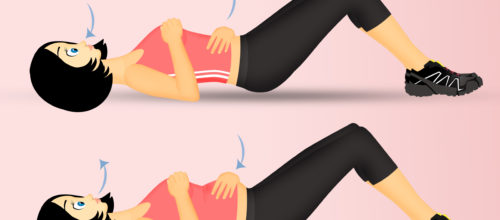
Diaphragmatic Breathing
The diaphragm is located at the base of your lungs and is the primary muscle of inspiration and most efficient muscle of breathing.
Diaphragmatic breathing, or belly breathing, is a technique intended to teach you to use the diaphragm correctly while breathing, as opposed to using accessory muscles in your neck and upper chest. This helps strengthen the diaphragm and decrease the work of breathing overall.
Learning controlled, diaphragmatic breathing is beneficial for everyone and is also a good stress relief technique. It is especially important for those recovering from illness or surgery or those with a history of pulmonary disease such as COPD.
Goals:
- Relaxation
- Breathing control
- Improve efficiency of ventilation
- Mobilize/remove secretions
Physiological Effects:
- Improve core muscle stability
- Improve your body’s ability to tolerate exercise
- Slows your rate of breathing so that you expends less effort/energy to breathe
- Promotes relaxation/reduces stress
- Lowers heart rate/blood pressure
- Improves respiratory capacity
- Decreases oxygen demand
Indications:
- Pulmonary disease (primary or secondary)
- Airway obstruction (COPD)
- Restriction of breathing due to musculoskeletal abnormality or obesity
- Surgical procedure such as thoracic or abdominal surgeries
- Post-operative pain
Technique:
- Lie on your back on a flat surface (or in bed) with your knees bent. You can use a pillow under your head and your knees for support.
- Place one hand on your upper chest and the other on your belly, just below your rib cage.
- Breathe in slowly through your nose, letting the air in slowly and deeply, towards your lower belly. The hand on your chest should remain still, while the one on your belly should rise.
- Tighten your abdominal muscles and let them fall inward as you exhale through pursed lips. The hand on your belly should move down to its original position.
The acronym DASS—Deep, Abdominal, Slow and Smooth—describes the goal pattern. Any sense of feeling light-headed is a sign of trying too hard or over breathing, and effort should be decreased.
You can also practice this sitting in a chair, with your knees bent and your shoulders, head, and neck relaxed. Practice for five to 10 minutes, 2 times a day.
Tips:
- Never force expiration. Your exhale should be relaxed or lightly controlled.
- Do not take a highly prolonged exhale that will cause you to gasp with the next inspiration. Your breathing pattern should be slow and regular.
- Do not initiate inspiration with accessory muscles (neck/shoulders) and upper chest.
References
https://my.clevelandclinic.org/health/articles/9445-diaphragmatic-breathing
https://www.physio-pedia.com/Diaphragmatic_Breathing_Exercises
